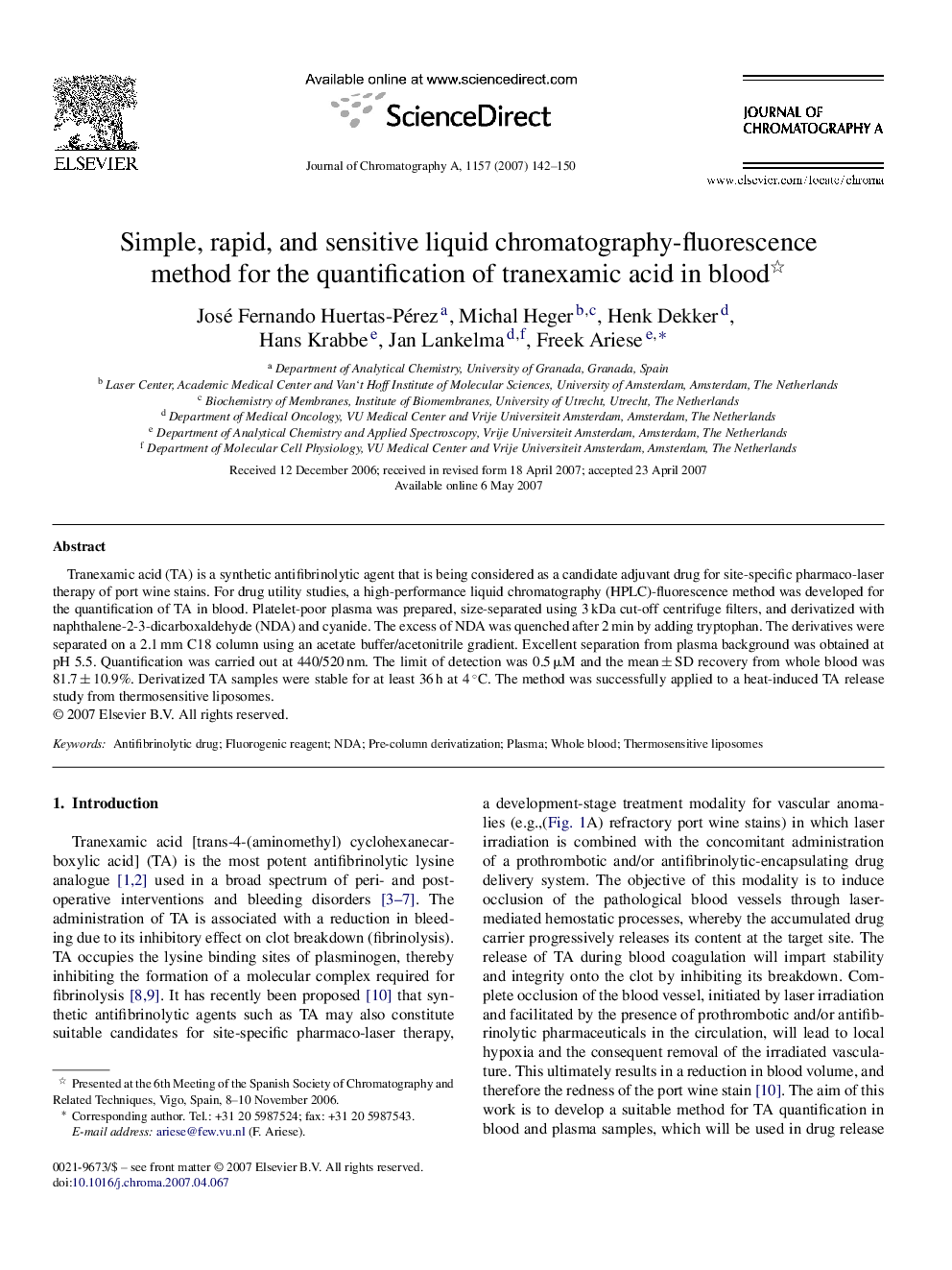| Article ID | Journal | Published Year | Pages | File Type |
|---|---|---|---|---|
| 1207022 | Journal of Chromatography A | 2007 | 9 Pages |
Tranexamic acid (TA) is a synthetic antifibrinolytic agent that is being considered as a candidate adjuvant drug for site-specific pharmaco-laser therapy of port wine stains. For drug utility studies, a high-performance liquid chromatography (HPLC)-fluorescence method was developed for the quantification of TA in blood. Platelet-poor plasma was prepared, size-separated using 3 kDa cut-off centrifuge filters, and derivatized with naphthalene-2-3-dicarboxaldehyde (NDA) and cyanide. The excess of NDA was quenched after 2 min by adding tryptophan. The derivatives were separated on a 2.1 mm C18 column using an acetate buffer/acetonitrile gradient. Excellent separation from plasma background was obtained at pH 5.5. Quantification was carried out at 440/520 nm. The limit of detection was 0.5 μM and the mean ± SD recovery from whole blood was 81.7 ± 10.9%. Derivatized TA samples were stable for at least 36 h at 4 °C. The method was successfully applied to a heat-induced TA release study from thermosensitive liposomes.
